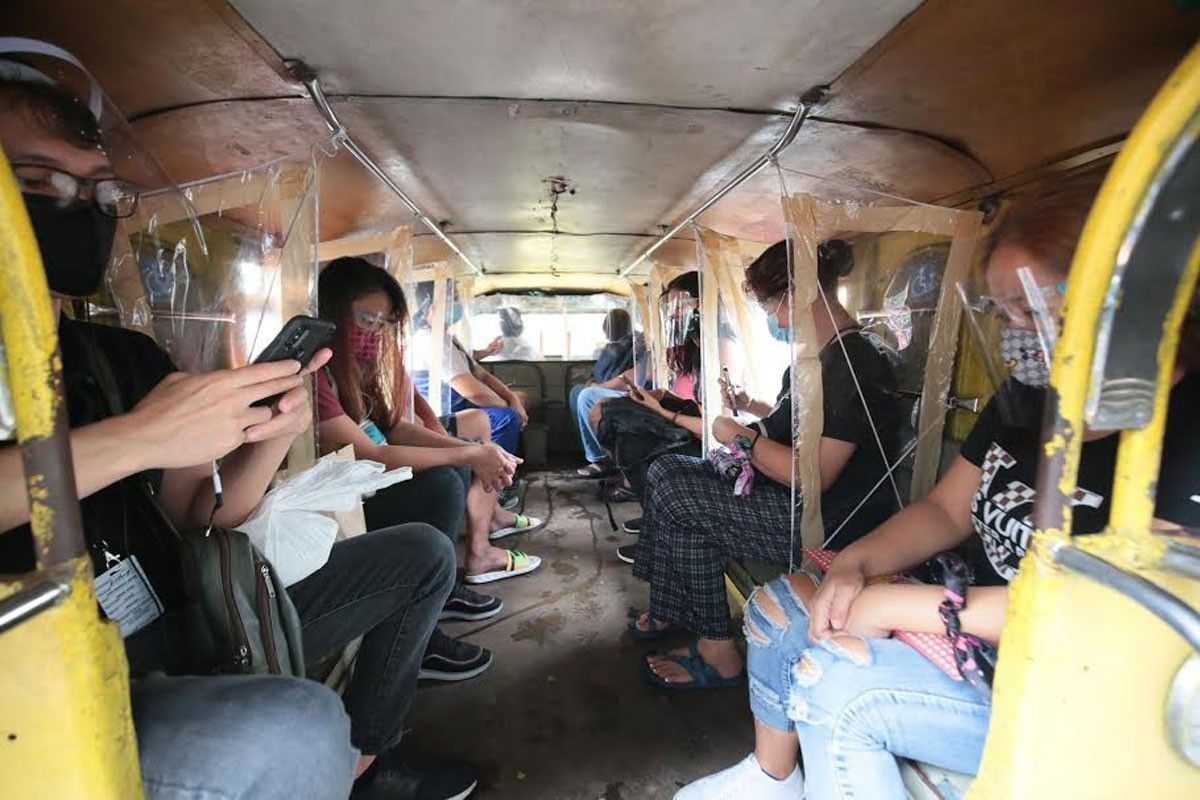More capacity, ventilation needed for public transport to open full capacity — transport group

MANILA, Philippines — With Metro Manila shifting back to Alert Level 1, transport officials should ensure the demand for transportation is met and transport options are safe for commuters first before opening up public transportation to 100 capacity, a transportation coalition said.
In a statement issued late Tuesday night, the Move as One transport coalition urged the Department of Transportation to take a number of steps to improve the running condition of the rail line systems in the Metro Manila as well as the enforcement of ventilation standards to shield commuters from coronavirus transmission.
This comes after the Department of Transportation announced that public transportation would shift back to 100-percent passenger capacity without any plastic barriers as Metro Manila shifts back to Alert Level 1. The Department of Trade and Industry also said that it is encouraging workers to begin working on-site again.
"Commuters endure kilometric queues for scarce public transport [and] have noted online that the MRT trains have been operating at standing room capacity and jeepneys and buses beyond the maximum capacity even during the more restrictive alert levels," the coalition's statement read.
According to the Land Transportation Franchising and Regulatory Board, 118,238 operational units of different PUV modes have already been given permits to ply 1,514 total routes open in Metro Manila.
But Move as One pointed out that according to the LTFRB's own memorandum circulars, there are still 9,809 units — or roughly 15% of 66,736 buses, jeepneys and UV expresses — that have yet to be allowed to operate and respond to overwhelming commuter demand.
LTFRB: Road vehicle inspections will continue
Speaking at the Laging Handa briefing Wednesday morning, lawyer Zona Tamayo, regional director of the LTFRB in Metro Manila said that even though plastic barriers were no longer required on public transport, the Department of Transportation's enforcers on the ground would still be inspecting vehicles for violations.
"[Standing passengers are allowed] in the rail sector, but in the road sector we're monitoring that. We're still calling on the public that the 100% capacity open in public transportation under Alert Level 1 is limited to seating capacity," she said in Filipino.
Asked about the penalties for offenses, Tamayo said: "We don't want to met out penalties, so we remind our drivers to follow our policies regarding basic health protocols."
Tamayo also encouraged drivers, operators, and transport workers to enlist for the national government's service contracting program.
Under service contracting, drivers and operators of public utility vehicles are paid by the government to ply their routes on a per kilometer basis. The program was meant to offset the effects of the capacity restrictions caused by the pandemic.
"The DOTr must also fully implement service contracting on buses and jeeps in order for the government to effectively prescribe limits to ridership with the appropriate monitoring of minimum public health standards," the Move as One Coalition said.
"With service contracting, the drivers will comply with the limits because their income will depend on the number of kilometers that they travel, not the number of passengers that they transport."
MAOC: Gov't should measure CO2 concentration on public transport
According to the guidelines set by the Health and Safety Executive, Britain’s national regulator for workplace health and safety, “a consistent CO2 value below 800 [parts per million] is likely to indicate that an indoor space is well ventilated.”
The national government's coronavirus task force recommends just "less than 1000 parts per million or ppm."
"A major route of COVID-19 infection is through the air, especially in enclosed spaces. Alarmingly, there is a lack of measurement, monitoring, and enforcement of proper ventilation in public utility vehicles," Move as One said.
"There is also very little monitoring of carbon dioxide levels as a proxy measure for COVID-19 exposure, where the rule of thumb is: the lower, the better."
The Move as One Coalition also recommended that the Department of Transportation regularly measure CO2 concentration—which it called "a proxy measure for COVID-19 exposure"— in a random sample of buses, jeeps, taxis, UV expresses, trains and stations.
"Wherever it is possible to install CO2 monitors and display their results live, the better it is for the riding public." — Franco Luna
- Latest
- Trending
































